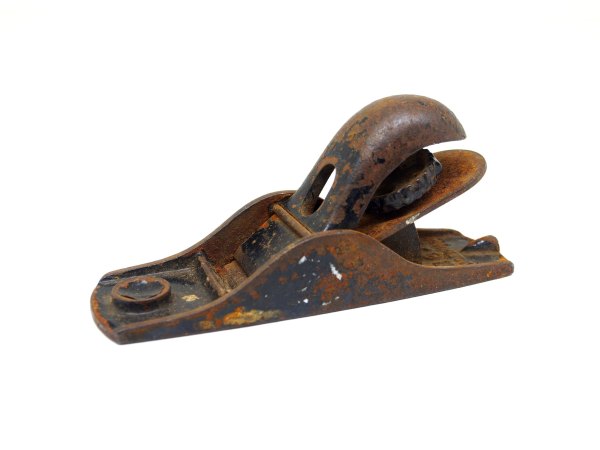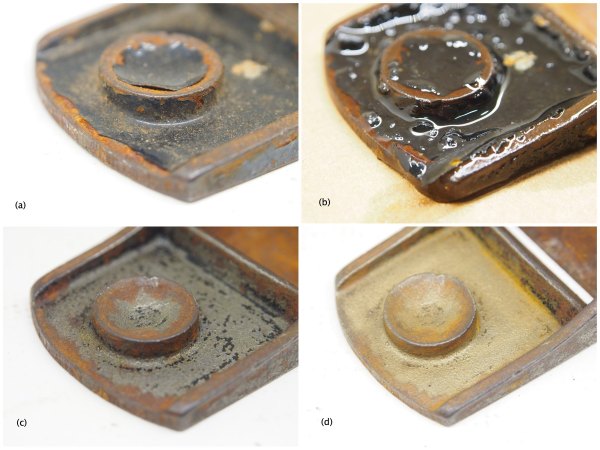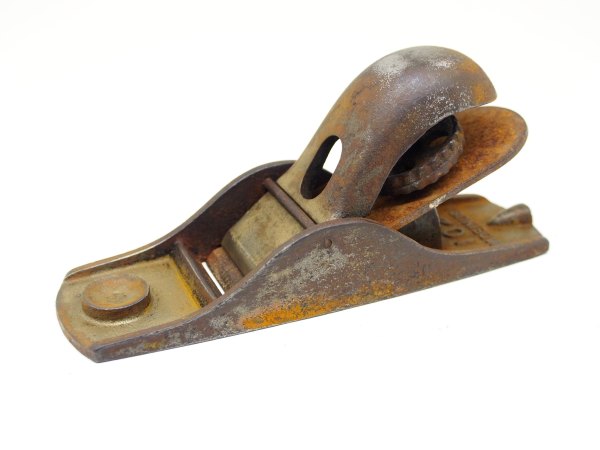Unique amongst block planes is the blade depth adjustment mechanism cited in Chaplin’s Patent No.126,519, and used by Tower and Lyon in their planes. The patent was for a bench plane, but the basic principles were adapted for the block planes.
The blade depth adjustment mechanism is based on the use of a saddle, or rest plate, upon which the blade rests, and is clamped to by the lever cap. The saddle is secured to the plane body using a single screw which still allows it to move in a longitudinal manner. Note the saddles of the No.15 and No.30 in Fig.1 are different – the No.15 has a recessed centre, with what seems like a hand-stippled bed. The surface of the No.30 is flat, with the exception of the recess for the securing screw.
Depth adjustment is achieved by an ingenious adaptation of the worm and worm-wheel gear system. It consists of a paddle-type lever attached to a section of worm gear (screw threads), the thread of which activates a partial worm wheel (quasi half-nut) formed in the underside of the saddle.
The worm gear, and partial worm wheel are shown below in Fig.3.
When the paddle is moved from right-to-left, the blade is forced outward, and when the paddle is moved from left-to-right, the blade is drawn in. The saddle, and hence the blade have a total movement of approximately 1/8″.
The clasping mechanism to attach the lever cap to the blade, and saddle is also unique to these planes. The lever cap has two lugs projecting downwards and terminating in hooks. The saddle is designed in such a manner that is has a shoulder on either side, against which the lugs on the lever cap strike.
The lever cap is attached to the plane by sliding it into the blade and saddle attached to the boss (the frog-like entity that protrudes from the stock). When the thumb screw is operated, the blade is forced down upon the upper portion of the saddle, forcing the worm gear-wheel system to engage. This holds both the blade and saddle rigidly is place (Fig.5).
The bench planes produced by Tower & Lyon were more prominent than their block planes, but that being said it is hard to find much relevant information. There is a Tower & Lyon catalog (in reprint form), but this is 1904, likely already containing some of their “improved” planes based on a 1902 patent related to an improved design for block (No.716,386). A type study and more information on Chaplin’s Patent Planes can be found on this site provided by Peter McBride.


















